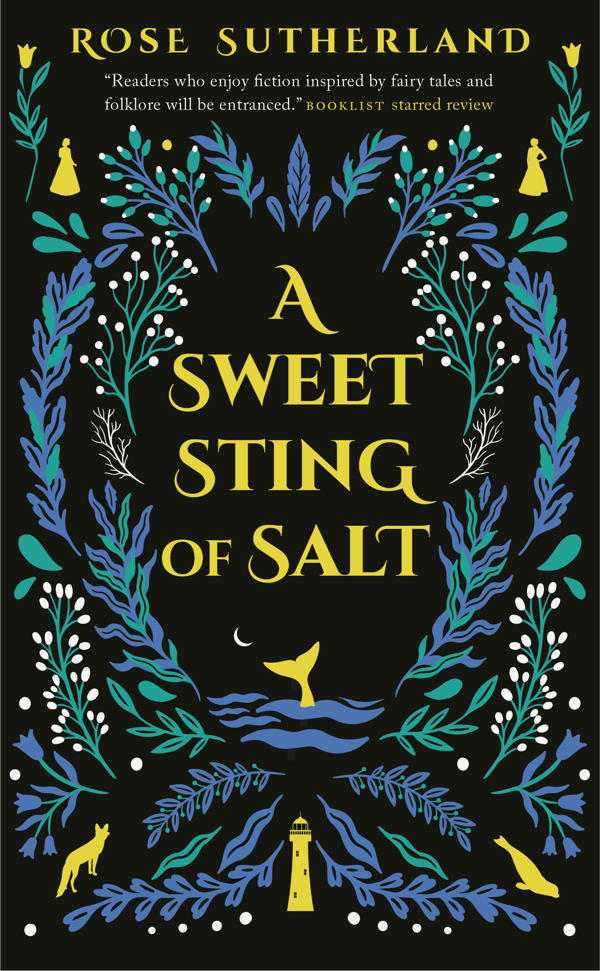This story was originally printed in the Summer 2024 edition of Celtic Life International.
Rose Sutherland can’t recall the first time she heard the myth of The Selkie Wife. Growing up with Scottish, Irish and Northern English ancestry, “it feels like I’ve always kind of known the story,” explains Sutherland. What she does remember, however, is something about the Scottish folktale never sat right with her—even as a child.
Like most folktales, stories of the selkie may differ, but most have a similar structure. In Celtic mythology, a selkie is a mermaid-like creature who shapeshifts between seal and human form. To become human, the selkie sheds her sealskin. Likewise, she needs don the skin again if she is to return to her aquatic dwelling.
In many versions of the tale, a human man falls in love with the selkie and steals or hides her sealskin so she can no longer return to the sea. Once she is resigned to life on land, the man marries the selkie and may even have children with her — but the selkie will always long to return to her true home. In some iterations of the tale, one of the selkie’s children finds the sealskin and gives it back to her so she may leave her husband. Although the ending is a sad one for the man, Sutherland didn’t empathize with him. It wasn’t until recently that she realized exactly why.
a 24-year-old midwife named Jean falls for Muirin, her neighbour’s mysterious new bride.
A few years ago, Sutherland came upon a post on the popular blogging site Tumblr: “Someone had posted a series of things about magical creatures in a modern context,” she explains. “They had thrown out this notion of selkies as victims of human trafficking.” At that point, Sutherland understood the reason the selkie tale had always disturbed her: “Someone has kidnapped a woman and forced her into a marriage.”
Sutherland quickly began making notes that would eventually become the basis for her debut novel, A Sweet Sting of Salt. The writing process, she says, was a messy one—and she faced some rejection along the way. “I drafted the whole thing over nine months, in fits and starts,” explains Sutherland. The book was officially released on April 9; she says, “It’s been a wild ride so far.”
A Sweet Sting of Salt is Sutherland’s reimagining of The Selkie Wife. The novel takes place in 19th century Nova Scotia, where a 24-year-old midwife named Jean falls for Muirin, her neighbour’s mysterious new bride. “It becomes obvious that there is something going on with Muirin and Jean can’t quite put her finger on what it is, at first. The more she digs into it, the more suspicious it all becomes.” In addition to revisiting the selkie figure, Sutherland wanted to challenge the idea that queer people didn’t exist (or, if they did, they were exclusively miserable) in historical times.
According to Sutherland, it was a challenge to market A Sweet Sting of Salt since it doesn’t fit neatly into one category. These days, fairytale or folktale retellings are almost part of their own genre. Whether it’s Ava Reid’s Juniper and Thorn or Neil Gaiman’s take on well-known Norse myths, it seems that what once was old is new again. Sutherland has her own ideas about why. “Even though a lot of the time we think of them as children’s stories—and they tend to be simplified for small ears, if you will—they’re actually very complex,” she says. “They delve into things that are actually very real, very grownup. Concerns about the world, how to look at the world, and lessons you may need to cope as an adult.”
To Sutherland’s astonishment, she’s come upon many people who haven’t heard of the original selkie myth. She’d originally wanted the reader to be as blindsided by the fantasy element as Jean. “Unfortunately, to market this book, I’ve had to spoil the biggest surprise in the book,” she says, laughing. “But I get it. You can’t bury the lede.”
As much as A Sweet Sting of Salt is a love story, it’s also a love letter of sorts to Sutherland’s home province. Although the author currently resides in Ontario, she grew up in rural Nova Scotia. “The ways in which I describe Nova Scotia was very much in homesickness and the desire to be home,” shares Sutherland.
“By transplanting [the folktale] to this continent, it instantly become much less homogenous. It was not, strictly speaking, only Celtic anymore.”

 Interview by Rebecca Dingwell • 2024-07-25
Interview by Rebecca Dingwell • 2024-07-25